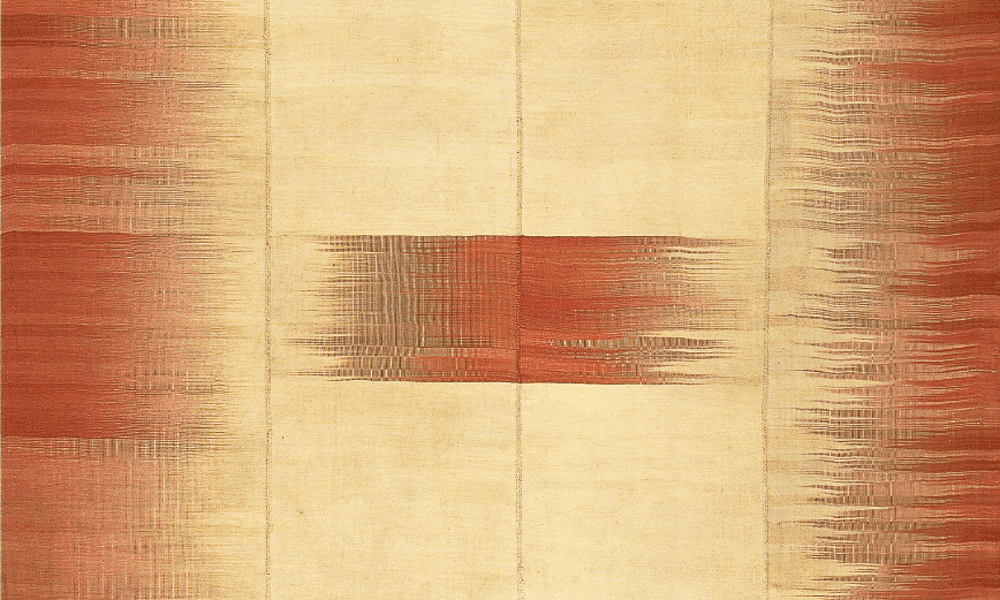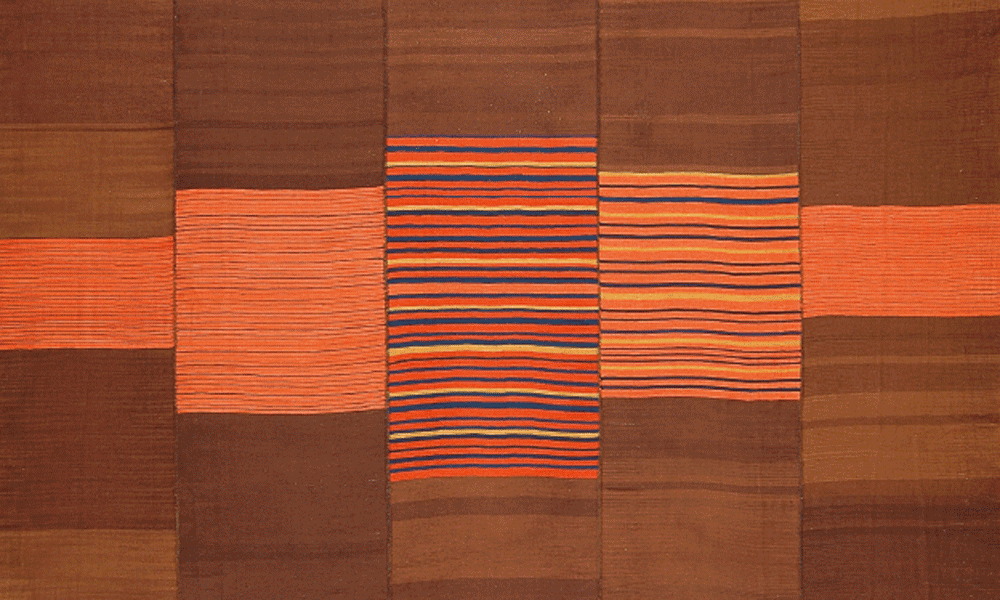Undiscovered Minimalism
Werner Weber’s kilims from Mazandaran Province in the north of Iran are currently on show at the Historical and Ethnological Museum in St. Gallen, Switzerland, until 30 January 2021. The collection was first exhibited there in 2004, alongside works of modern art, and may be familiar to readers from Weber and Parviz Tanavoli’s 2011 publication, Undiscovered Minimalism: Gelims from Northern Iran. Sixteen years later, the flatweaves return for the exhibition ‘Mazandaran Gelim: Little-Known Minimal Art from Iran’.
Visiting remote villages of the Hezar Jerib area in the mid 1990s, Weber and Tanavoli found heirloom flatweaves unlike anything they had seen, with minimalist abstract designs in an evocative style akin to modern painting. The millennia-old weaving traditions of the peoples of this region were passed down from mothers to daughters. These mostly very large kilims were first woven at the beginning of the 20th century and seem little-used. Curiously, the inhabitants of the area would not or could not make any statements about their function, or the complex weaving technique that results in shimmering colour transitions. Therefore, their practical use is unknown; they are too big to be displayed in the humble huts in which they were made.
The refined and complex technique, the fine material and their unused condition lead Weber and Tanavoli to suggest that they might have been made for spiritual purpose. Whether a bridal gift, a ritual object, or intended for another purpose, the weavers of Mazandaran undoubtedly created masterful textile art.



























Comments [0] Sign in to comment